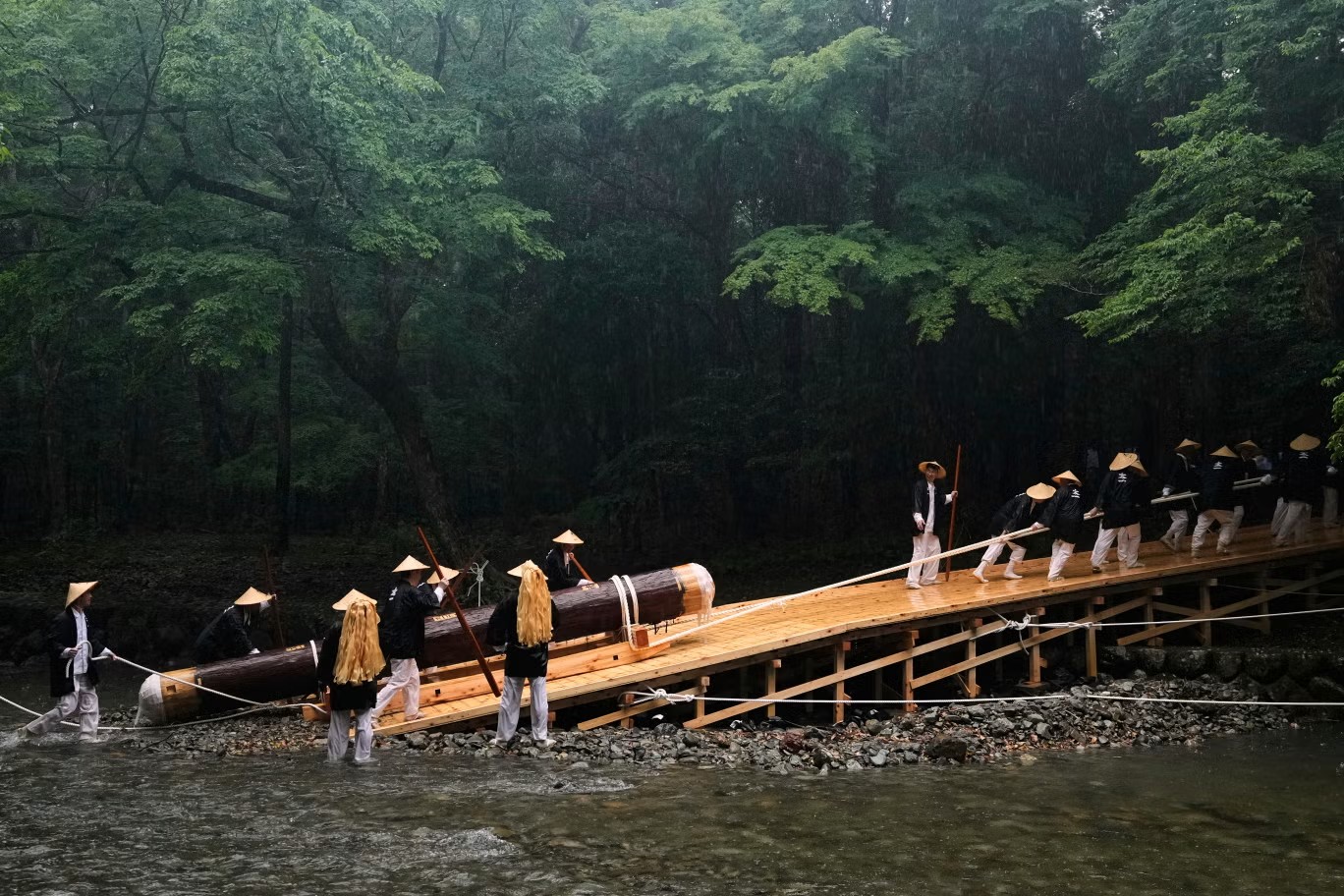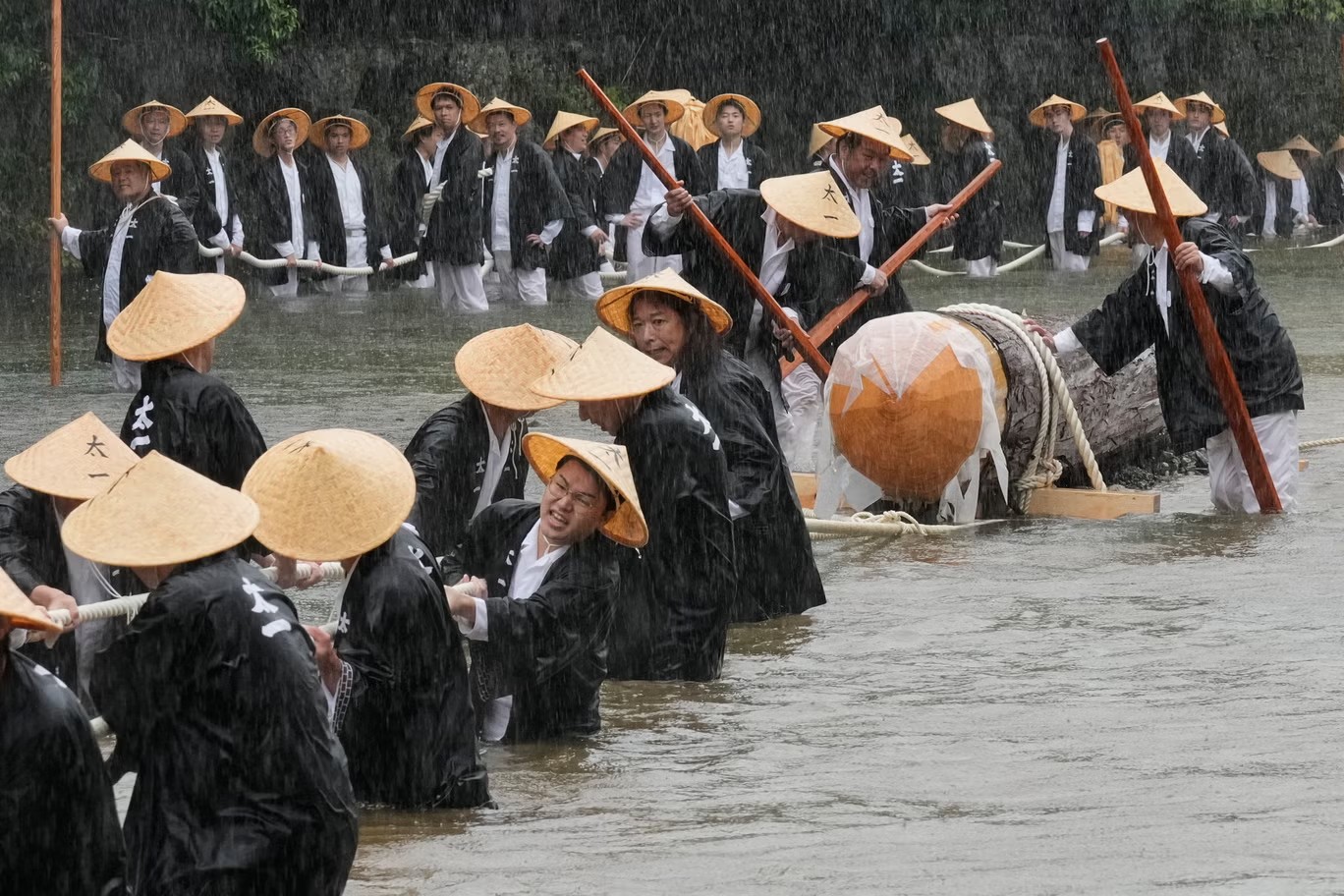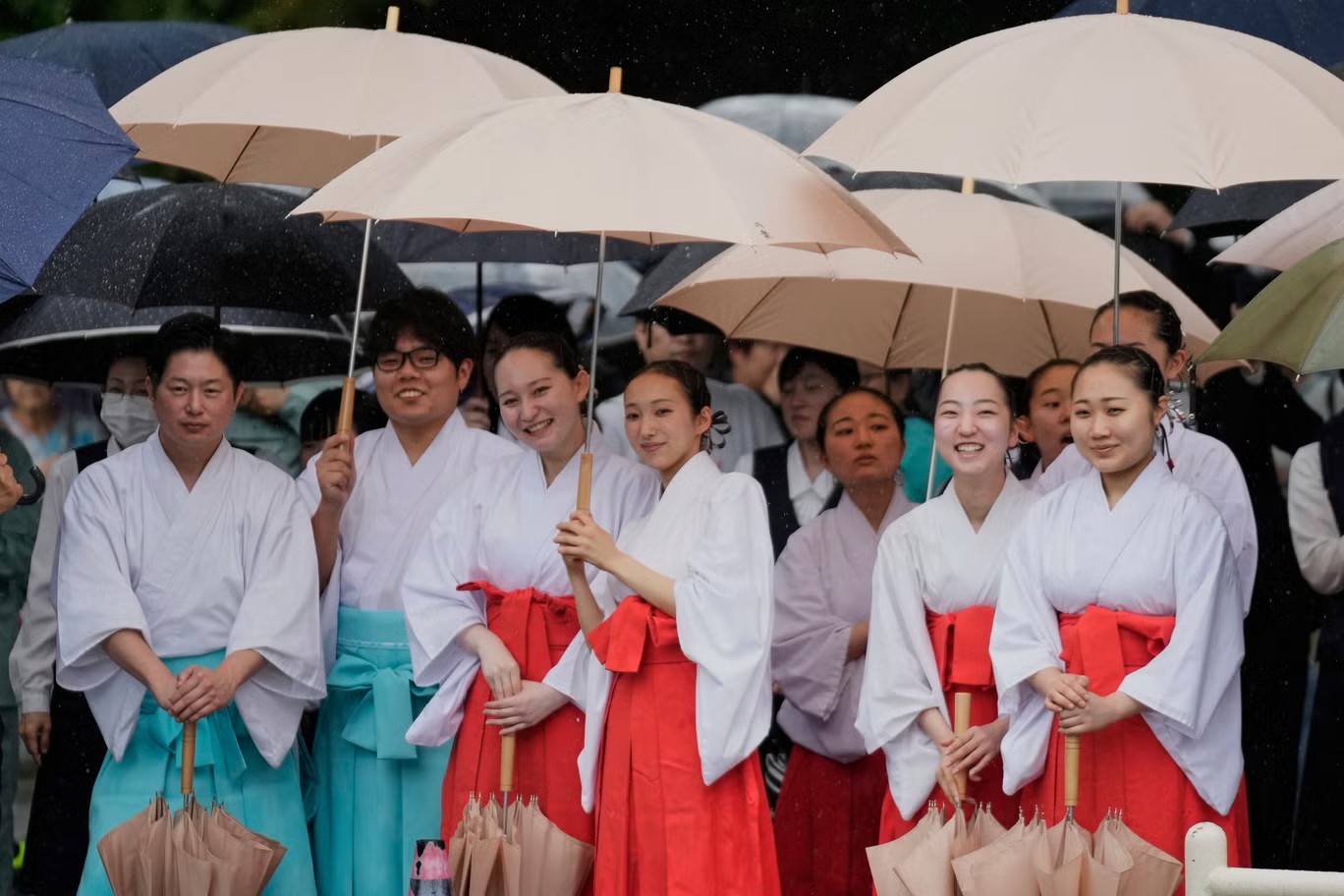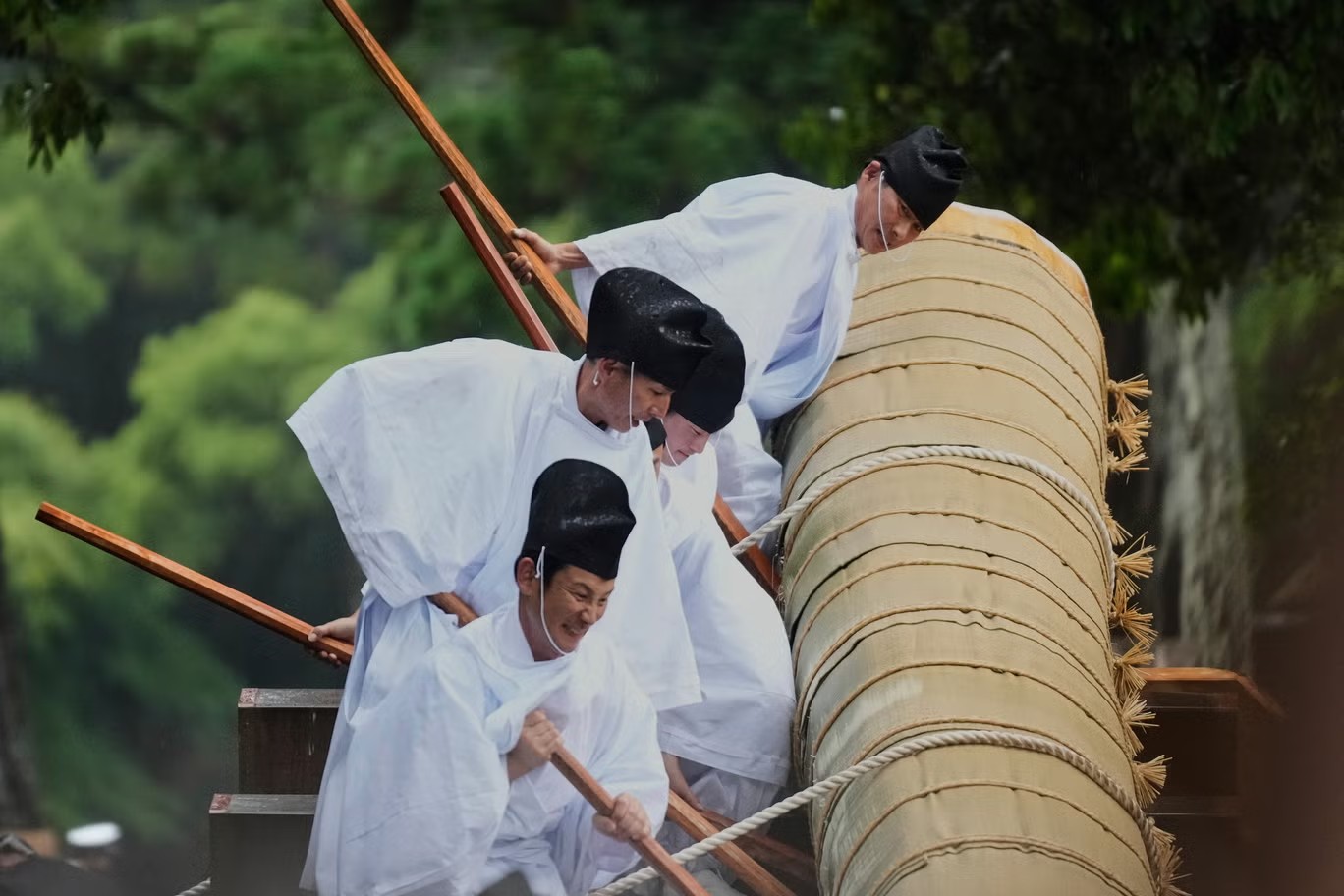In the forests of the Japanese Alps, Shinto priests guide sacred lumberjacks dressed in ceremonial white as they cut down 300-year-old cypress trees. Each axe strike follows precise angles, and after the ritual chant, giant trees fall — beginning a sacred cycle at Ise Jingu, Japan’s most venerated Shinto shrine.
For over 1,300 years, Ise Jingu has been entirely dismantled and rebuilt every twenty years. This monumental $390 million undertaking requires Japan’s most skilled carpenters, builders, and artisans, who dedicate nearly a decade to recreating structures that are destined for demolition — only to be renewed once again.

Over 1,300 Years of Rebuilding
The current rebuilding cycle marks the 63rd iteration since the first record in 690 AD, during the reign of Empress Jitō. A total of 125 shrine structures, over 1,500 garments and ritual objects, and sacred tools are reconstructed. The shrine’s inner sanctum honors Amaterasu, the sun goddess, revered in Japanese Shinto belief for nearly two millennia.
Despite the impermanence of the buildings, each generation sees the shrine as eternal. Priests and locals emphasize that the tradition is not about loss but about renewal: “After 20 years, we want the deity to occupy a beautiful, pristine, new shrine.”
The Ceremonial Process
Reconstruction at Ise spans nine years and includes 33 major festivals and ceremonies. Among them are:
- Tree-felling rituals: Priests seek approval from mountain deities before felling sacred cypress trees.
- River procession: Logs weighing two tons are pulled by men in traditional attire through the Isuzu River, chanting in unison.
- Sacred pillar ritual: At night, priests carry lanterns into the mountains for a secret purification of the holy pillar that will be placed beneath the main sanctuary.
- Roof preparation: Miscanthus reed thatch, cultivated for eight years, is used for the shrine’s roofs, synchronized with the rebuilding schedule.

Symbolism of the 20-Year Cycle
Scholars and observers provide several explanations for the cycle:
- Rice preservation: Twenty years reflects the shelf life of preserved rice, central to Shinto offerings.
- Human life stages: Twenty years represents generational transitions — birth to adulthood, adulthood to middle age, and middle age to death.
- Spiritual renewal: The cycle reinforces Shinto’s belief in impermanence and rebirth.
Photographer Miori Inata, who spent a decade documenting the shrine, reflected: “I was deeply touched by the awareness that these ceremonies have been carried out for 1,300 years, every 20 years, and will continue in the future.”
Interruptions in History
Remarkably, the cycle has only been broken twice:
- During Japan’s civil wars of the 15th and 16th centuries.
- Following World War II.
Harvard professor Yukio Lippit notes that while many shrines abandoned their rebuilding cycles due to history’s unpredictability, Ise survived because of its deep national and spiritual significance.
Community and Emotional Connection
For locals, the cycle is part of life itself. Grandparents witness one reconstruction, while grandchildren attend the next. A Shinto priest, Yosuke Kawanishi, remarked: “Our grandfathers will no longer be here in 20 years, but we, now young, will later see our grandchildren participate in the new Ise.”

Visitors describe the shrine’s aura as mysterious and transformative. Yoriko Maeda, a nearby sake shop owner, explained: “When I cross the bridge, my breathing changes. The wind and sounds of nature ease my stress — it feels entirely different.”
Honoring the Trees
Tree-felling ceremonies carry profound symbolism. Lumberjacks pray before stumps to honor the life of the trees. Logs are carefully transported, covered in white cloth and straw mats, reflecting reverence for nature.
Soju Ikeda, a lumber specialist, recalled his grandfather teaching him that “trees can weep.” As the axe struck the heart of a cypress, the fragrance filled the air like flowing blood, and the cracking sound echoed like a scream. “At that moment, I realized the tree was crying for its own existence,” he said.
Challenges of Modern Times
While Ise prospers, Japan’s overall Shinto landscape faces challenges. Rural depopulation and urban migration have caused a decline in the number of shrines nationwide. Yet, Ise continues to attract over 7 million pilgrims annually, serving as a living symbol of cultural and spiritual continuity.
Permanent carpenters’ studios, cypress forests cultivated for shrine construction, and traditions handed down across generations ensure that the cycle continues into the future.
Conclusion
The reconstruction of Ise Jingu every twenty years embodies the Shinto philosophy of impermanence, reverence for nature, and renewal. It is a spiritual cycle where destruction gives way to rebirth, and tradition ensures continuity across centuries. For those who witness it, the experience is more than cultural heritage — it is a profound reminder of life’s fragility, beauty, and eternal rhythm.
Tags: Shinto Shrine, Ise Jingu, Shrine Reconstruction, Japanese Traditions, Shikinen Sengu, Amaterasu, Japanese Culture.


